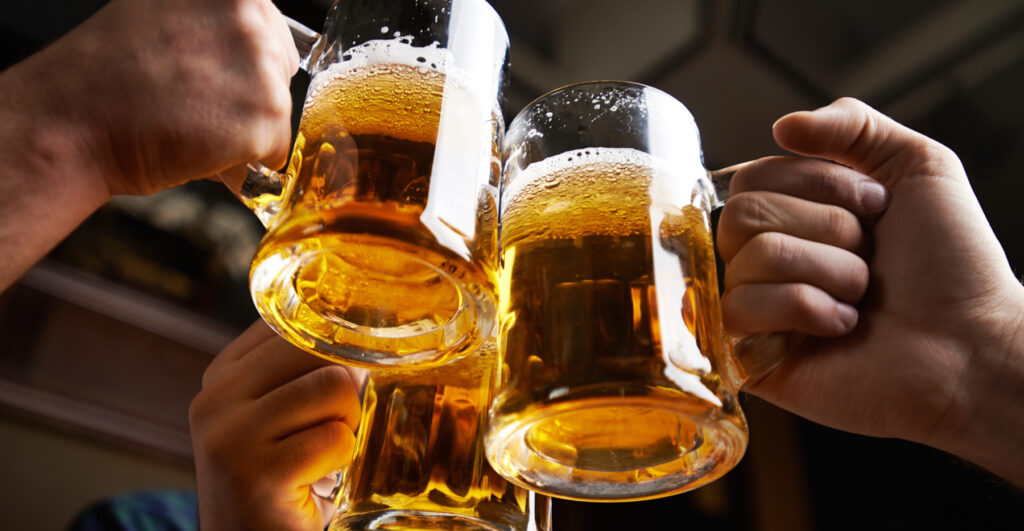In recent years, mixology has undergone a quiet revolution, driven by a significant change in alcohol consumption habits. This trend does not suggest abandoning the pleasure of drinking but rather a redefinition of what a cocktail can be. With the increasing awareness of health, well-being, and quality of life, the public has been seeking alternatives that preserve the sensory experience of drinks without the effects of alcohol. This trend is reflected not only in social habits but also in the beverage industry, which has been heavily investing in innovation to meet this new demand.
Research reveals that new generations, particularly Millennials and Generation Z, have significantly reduced their alcohol consumption compared to previous generations. In the United States and Europe, the movement known as “sober curiosity” has gained momentum, encouraging people to explore alcohol alternatives without sacrificing socializing in bars and events. This movement is rooted in various social and cultural factors, including growing concerns about mental health, physical well-being, productivity, and even environmental and ethical considerations related to alcohol production.

The growth of initiatives such as Dry January, an annual challenge to abstain from alcohol for a month, is a reflection of this trend. Studies indicate that a significant portion of Dry January participants report feeling more energetic, improving their sleep quality, and reducing symptoms of anxiety. Furthermore, the rise of the non-alcoholic spirits market shows that this shift is not temporary but part of a new lifestyle that has directly impacted the beverage and hospitality industries.
Factors such as the pursuit of better sleep quality, mental health, and even the desire to maintain workplace productivity contribute to this behavioral change. Concerns about alcohol’s impact on longevity and athletic performance have also led many consumers to reconsider their relationship with alcoholic beverages.
Mixology has always been tied to culture and social identity, reflecting trends, lifestyles, and even historical contexts. Since the earliest records of mixology in the 19th century, cocktails have become symbols of sophistication and creativity. Timeless classics such as the Martini, Negroni, and Manhattan were created in different eras and gained popularity for capturing the essence of the social and cultural moment in which they emerged.
In the 1920s, during Prohibition in the United States, bartenders’ creativity flourished, resulting in the invention of new drinks to mask the taste of questionable-quality spirits. Over the decades, cocktails went through various phases: from the glamour of the 1950s and 1960s with sophisticated bars and elaborate drinks to the explosion of tropical drinks in the 1980s, and finally, the resurgence of craft mixology in the late 2000s.
Today, mixology is recognized as an art form, where bartenders combine ingredients in innovative ways to create unique sensory experiences. The cocktail culture has also expanded to include a broader audience, embracing not only alcoholic beverages but also alcohol-free alternatives that maintain the same complexity and sophistication.
In light of this new landscape, the cocktail industry has had to reinvent itself. Renowned bars, many of which are listed among the World’s 50 Best Bars, have started investing in exclusive alcohol-free or low-ABV cocktail menus. Bartenders have been exploring unusual and sophisticated ingredients, such as natural fermentations, shrubs, artisanal bitters, and non-alcoholic spirits, creating drinks that are just as complex and elaborate as their alcoholic counterparts.
Additionally, major brands and distilleries have been focusing on the development of alcohol-free beverages, such as Seedlip, a spirit that captures herbal and botanical flavors without containing alcohol. This innovation has paved the way for the creation of new categories of drinks, allowing for more sophisticated and structured experiences.
The rise of alcohol-free cocktails reflects a broader shift in consumption habits and perceptions of well-being and socialization. Mixology, which has historically been associated with alcohol consumption, has proven its ability to evolve and adapt to the times, offering sophisticated, creative, and inclusive alternatives. The future of mixology promises to be increasingly innovative, diverse, and open to different consumer profiles, ensuring that the drinking experience remains a pleasure for all, regardless of alcohol content.
Alcohol consumption varies widely around the world, influenced by cultural, religious, economic, and social factors. While in some countries, consumption is part of tradition and daily life, in others it is severely restricted or even prohibited.
Alcohol is one of the most consumed substances on the planet, being part of celebrations, rituals, and social interactions for millennia. According to the World Health Organization (WHO), the global average of pure alcohol consumption per capita is around 6.2 liters per year, but there are significant variations between regions.
Europe: It is the continent with the highest per capita consumption, particularly in Eastern European countries such as Moldova, Lithuania, and Russia. Wine, beer, and spirits are widely consumed, being part of the culture and even the economy.
Americas: In Latin America, countries like Argentina and Brazil have significant consumption, driven by a strong tradition of wines and beers. In the United States and Canada, there is a consolidated culture of moderate consumption, but also concerns about alcohol abuse.
Asia: Consumption varies drastically. While countries like China and Japan have a strong alcoholic beverage market, including sake and baijiu, nations like India and countries in the Middle East have religious and legal restrictions on consumption.
Africa: Some nations, like South Africa, have a significant alcoholic beverage market, while others, such as Libya and Somalia, have strict prohibitions due to religious influences.
Oceania: Australia and New Zealand have high consumption, with beer culture being predominant.
The alcoholic beverage sector generates trillions of dollars globally, creating jobs and significant tax revenue for many countries. However, excessive consumption is linked to various public health problems, such as addiction, liver diseases, traffic accidents, and domestic violence.
Governments around the world adopt different strategies to address the negative impacts, such as increasing taxes, restricting advertising, and launching awareness campaigns. Nordic countries like Sweden and Norway have strict state control over beverage sales, while others like France and Italy emphasize responsible consumption as part of food culture.
In recent years, some trends have emerged in global alcohol consumption:
- Increase in the consumption of premium and artisanal beverages: There is a growing demand for natural wines, craft beers, and exclusive spirits.
- Popularity of low-alcohol beverages: Products like beers and wines with less alcohol have gained ground, reflecting greater health concerns.
- Expansion of non-alcoholic beverages: The market for alcohol-free cocktails and “zero” beers is rapidly growing, driven by consumers who want to enjoy the experience without the effects of alcohol.
- Changes in young people’s habits: In several Western countries, younger generations are drinking less than previous ones, prioritizing healthier lifestyles.
Alcohol consumption will continue to evolve, reflecting cultural changes, sector innovations, and public health policies. While in some places, there is a search for moderation, in others, consumption remains deeply rooted in tradition.

